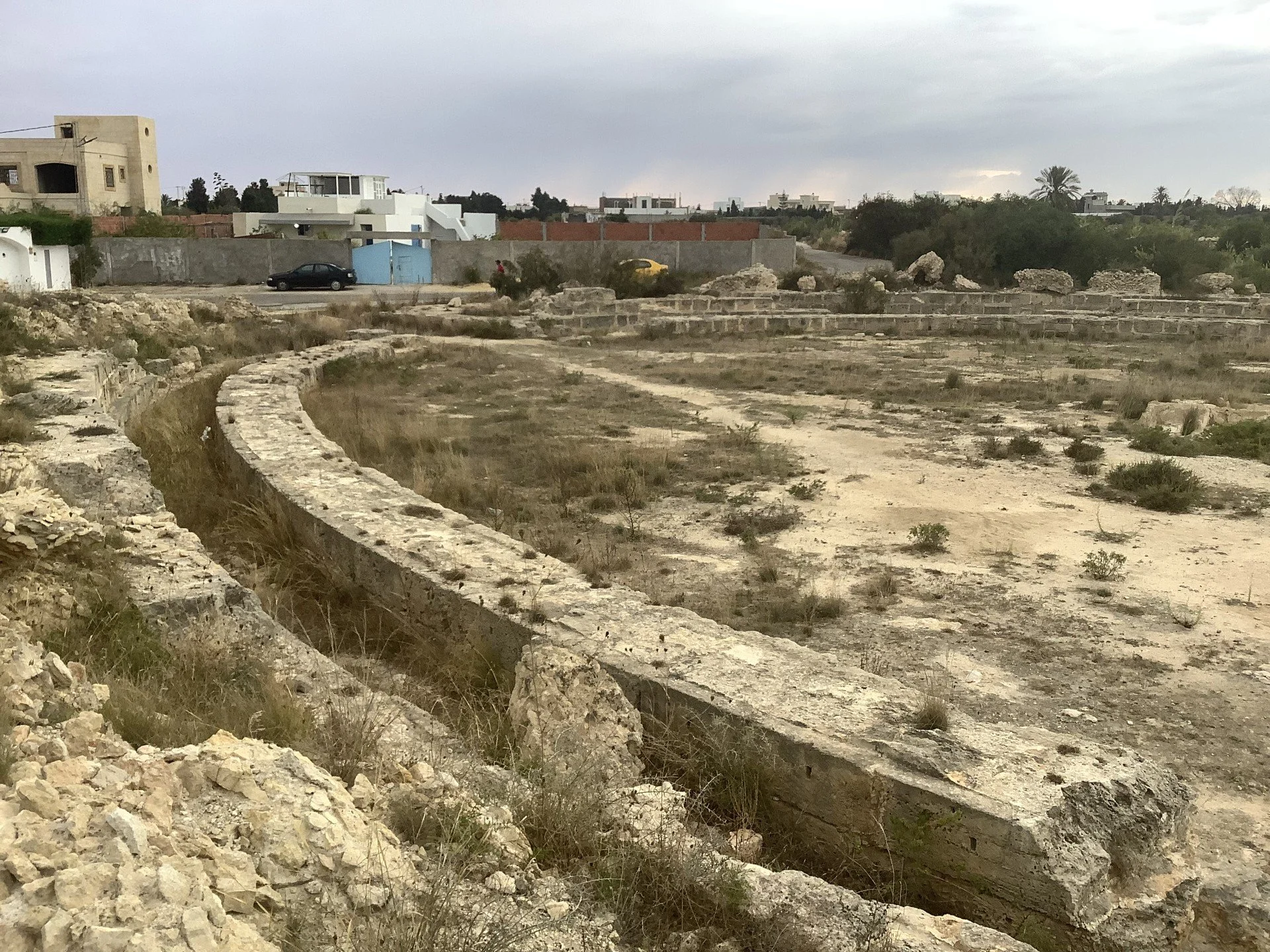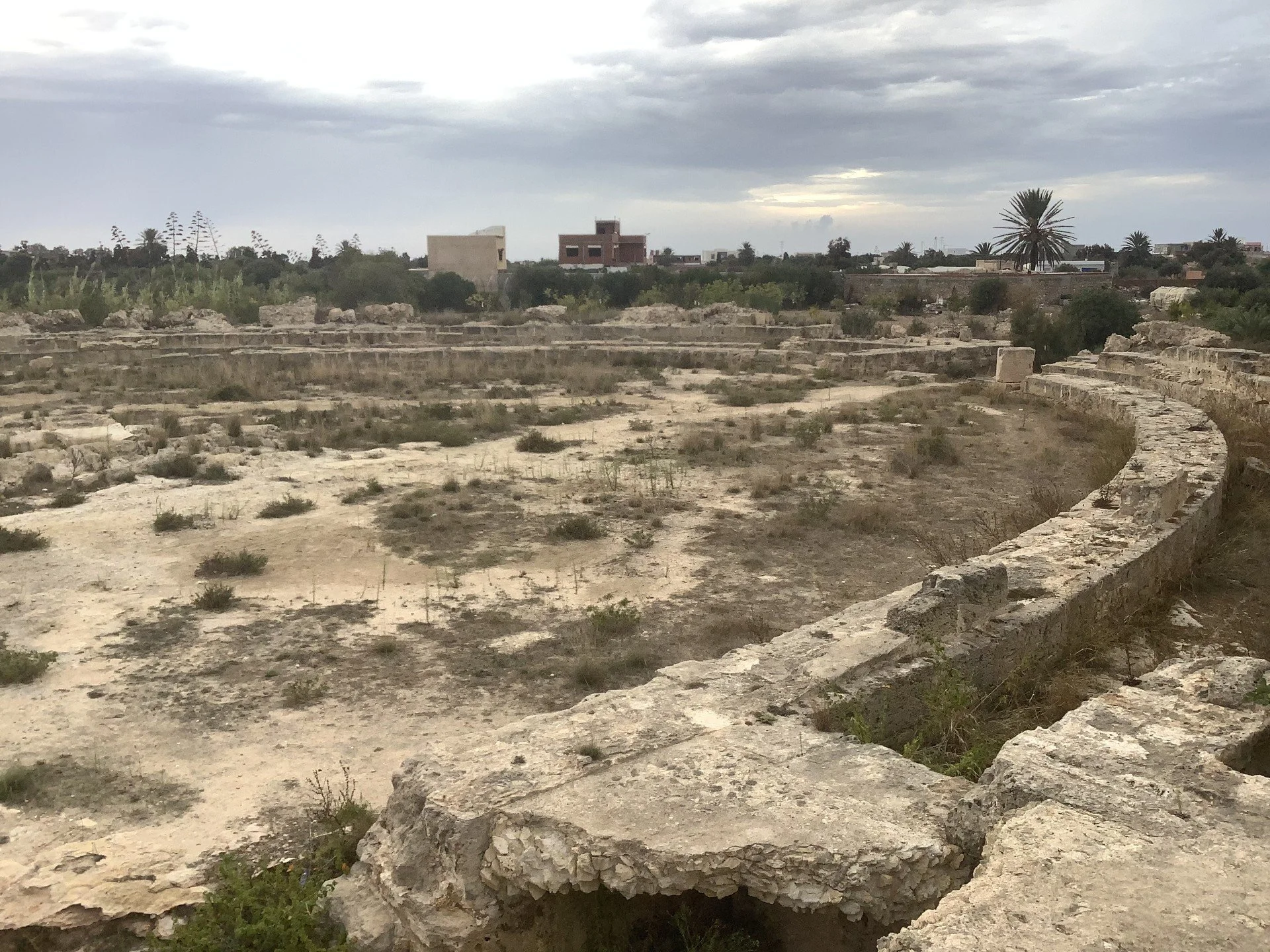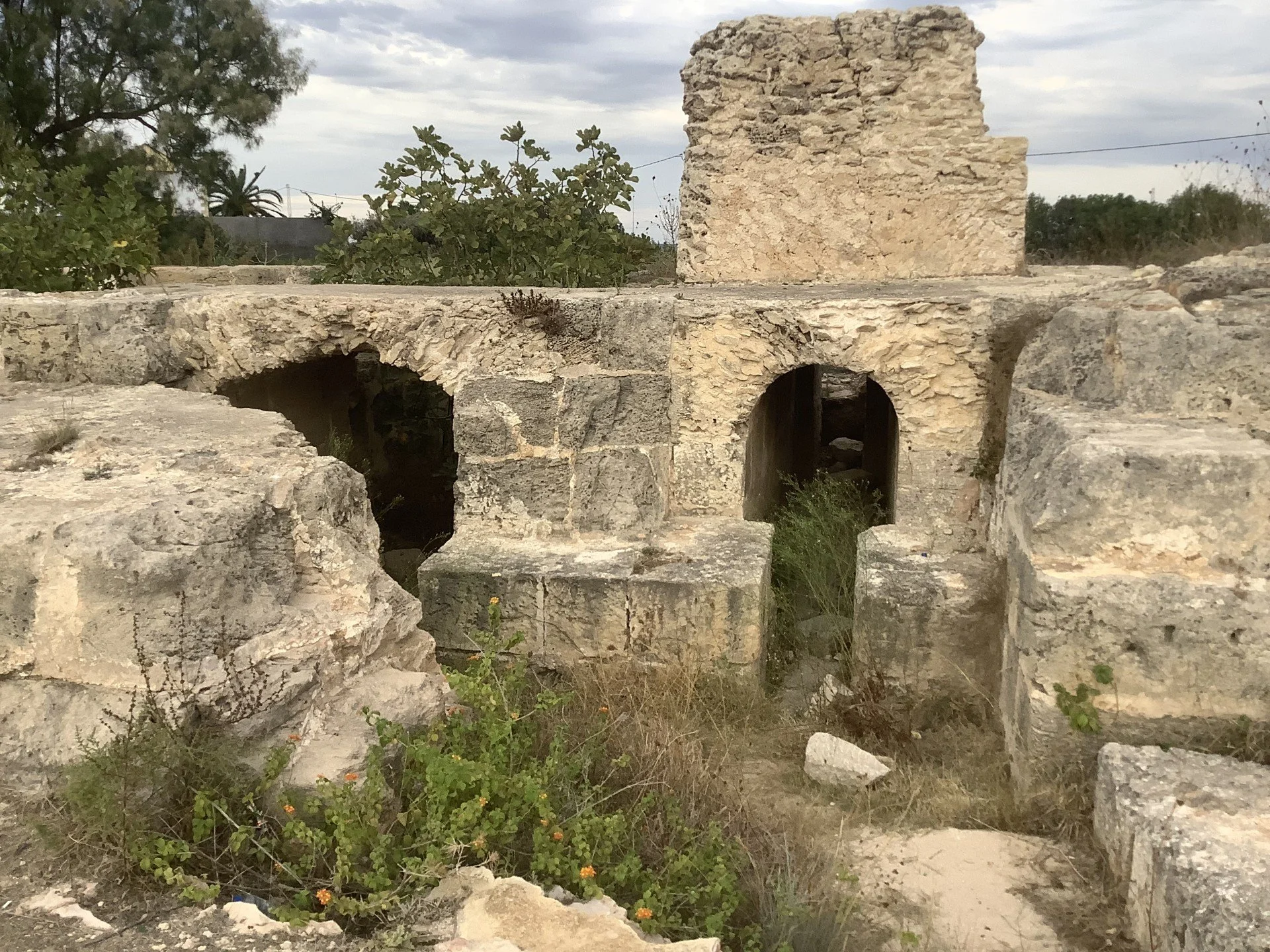XLIX Bekalta (Thapsus)
What3words – vacating.suitcase.elapsed
Construction - 1st Century AD
Capacity - 16,000
Visited September 2025
Obscure and unvisited. Intact foundations of an amphitheatre comprising stone blocks so substantial they were presumably too large and heavy to cart away and re-use.
Thapsus was founded by the Phoenicians and served as a waypoint on the trade routes between modern day Spain and North Africa. It appears on the 12th Century ‘Tabula Peutingeriana’ as ‘Tapsum’ (see Adventures in Campania PtIII 30th Jan 2025 on the ‘Amphitheatre News and Updates’ page).
Julius Ceasar defeated Metellus Scipio and Numidian King Juba I at the Battle of Thapsus in 46 BC on a coastal site just north of the settlement. Thapsus subsequently became a Roman colony in the province of Byzaena.
Thapsus harbour was protected by a Roman breakwater (mole) built in concrete and stone and extending almost a kilometre from the shore. The remaining stump of the structure lies within the present day harbour wall.
With the passage of time, the area inland of the port became almost entirely agricultural and thus it remains today. Many Roman stones were re-used to construct dwellings and dividing walls between land parcels. Mosiacs and other artifacts are uncovered periodically and often removed to museums for protection.
The amphitheatre of Thapsus, which measures 240 feet by 150 feet and seated up to 16,000, lies unvisited and unmarked a short distance inland to the south of the harbour. Its south-western curve is followed by the ‘Route du Théatre Romain’.
The substantial foundations are present including the lower part of the wall enclosing the arena which is faced with large wrought stones. Some of the inclined supports for the stairs leading to the lower cavea and some drainage portals are also present. The site is surrounded by farms, olive groves and polytunnels. You wont find any signposts or directions and ideally you need satnav, what3words and a compliant taxi driver to find it.



